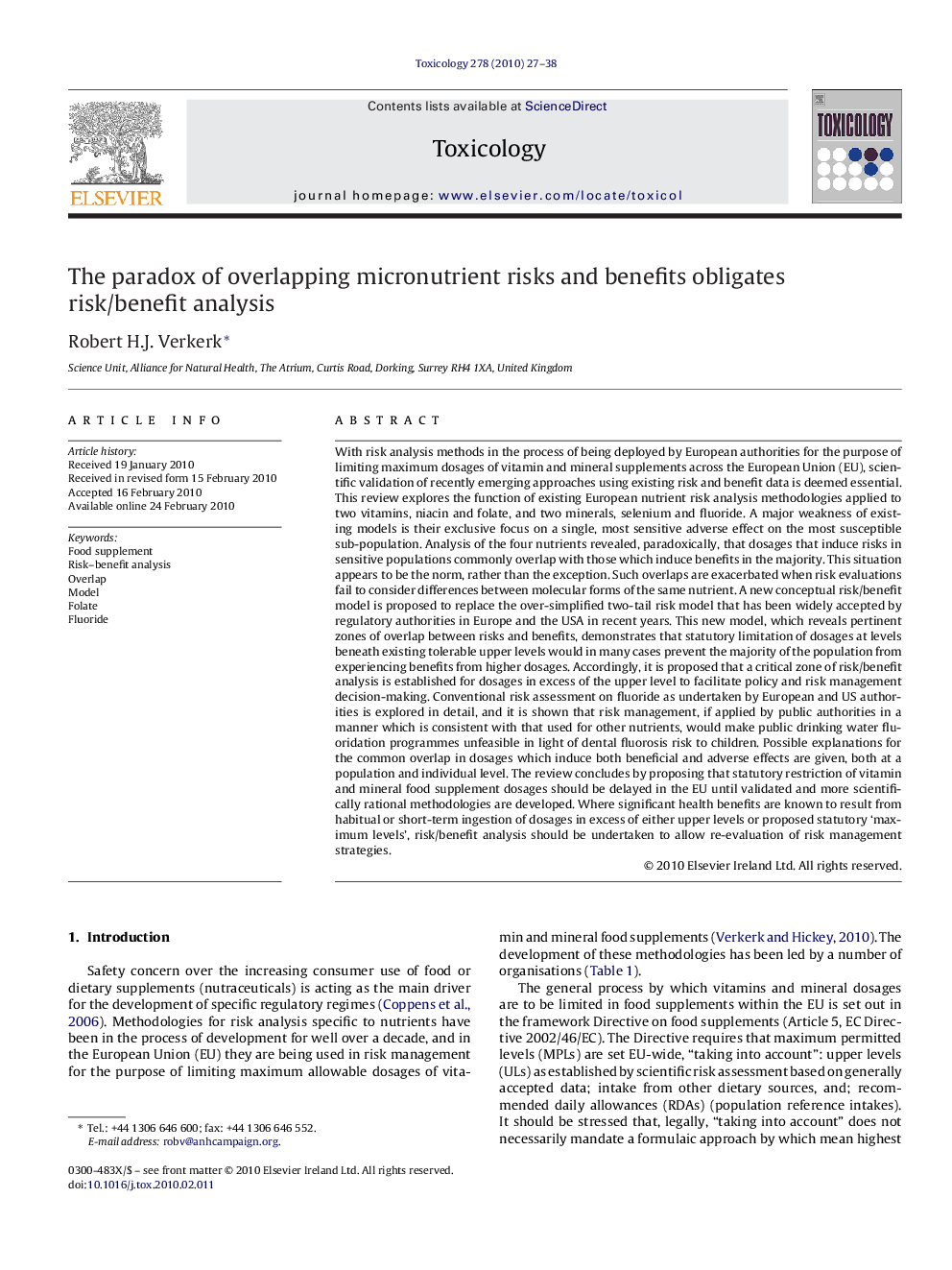| کد مقاله | کد نشریه | سال انتشار | مقاله انگلیسی | نسخه تمام متن |
|---|---|---|---|---|
| 2596170 | 1132514 | 2010 | 12 صفحه PDF | دانلود رایگان |

With risk analysis methods in the process of being deployed by European authorities for the purpose of limiting maximum dosages of vitamin and mineral supplements across the European Union (EU), scientific validation of recently emerging approaches using existing risk and benefit data is deemed essential. This review explores the function of existing European nutrient risk analysis methodologies applied to two vitamins, niacin and folate, and two minerals, selenium and fluoride. A major weakness of existing models is their exclusive focus on a single, most sensitive adverse effect on the most susceptible sub-population. Analysis of the four nutrients revealed, paradoxically, that dosages that induce risks in sensitive populations commonly overlap with those which induce benefits in the majority. This situation appears to be the norm, rather than the exception. Such overlaps are exacerbated when risk evaluations fail to consider differences between molecular forms of the same nutrient. A new conceptual risk/benefit model is proposed to replace the over-simplified two-tail risk model that has been widely accepted by regulatory authorities in Europe and the USA in recent years. This new model, which reveals pertinent zones of overlap between risks and benefits, demonstrates that statutory limitation of dosages at levels beneath existing tolerable upper levels would in many cases prevent the majority of the population from experiencing benefits from higher dosages. Accordingly, it is proposed that a critical zone of risk/benefit analysis is established for dosages in excess of the upper level to facilitate policy and risk management decision-making. Conventional risk assessment on fluoride as undertaken by European and US authorities is explored in detail, and it is shown that risk management, if applied by public authorities in a manner which is consistent with that used for other nutrients, would make public drinking water fluoridation programmes unfeasible in light of dental fluorosis risk to children. Possible explanations for the common overlap in dosages which induce both beneficial and adverse effects are given, both at a population and individual level. The review concludes by proposing that statutory restriction of vitamin and mineral food supplement dosages should be delayed in the EU until validated and more scientifically rational methodologies are developed. Where significant health benefits are known to result from habitual or short-term ingestion of dosages in excess of either upper levels or proposed statutory ‘maximum levels’, risk/benefit analysis should be undertaken to allow re-evaluation of risk management strategies.
Journal: Toxicology - Volume 278, Issue 1, 28 November 2010, Pages 27–38